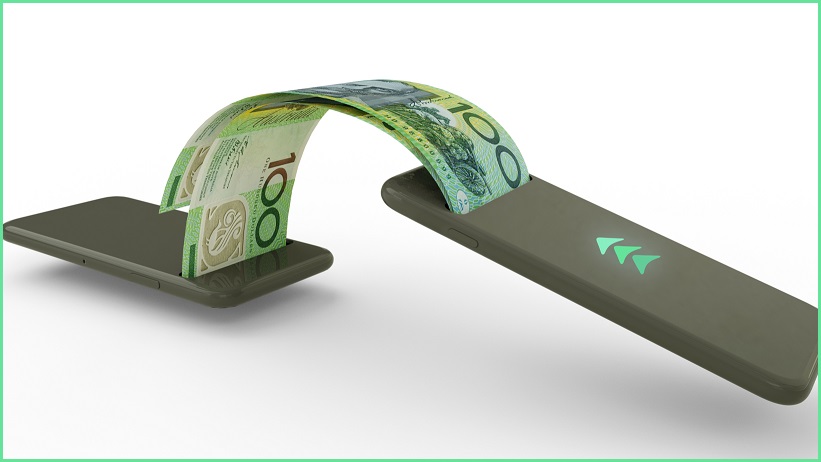Australian consumers are well behind our Asia-Pacific neighbours when it comes to adopting mobile payment platforms (MPP), according to new research that blames banks for preventing us from enjoying MPPs’ recent “phenomenal” regional growth.
Although Australians are among the world’s most avid users of smartphones, a Griffith Asia Institute analysis found that we remain among the APAC region’s least advanced adopters of alternative payment platforms like Alipay, WeChat Pay and UnionPay.
MPPs’ business model “shifts the centre of payment transactions from the banking system to commerce,” researchers said, noting that the alternative payment platforms “transform the payment industry through disintermediation of banking and realignment of incentives between consumers, merchants and payment service providers.”
Despite their innovative design, just 25.1% of Australian Internet customers use mobile payment services monthly, compared with Hong Kong (46.7 per cent), Thailand (45.3 per cent), Taiwan (42.6 per cent), and Singapore (37.5 per cent).
That ranks us 12th out of 14 countries analysed – confirming that Australian MPPs have been unable to release banks’ stranglehold on payment infrastructure.
“Southeast Asian markets are more advanced in adopting the technology,” researchers found, “whilst the ANZ markets bear more influence from the banks despite the advent of the tech giants.”
It’s a very different picture in China, where mobile payments have been the most popular way of paying for goods and services since 2017 – with cash the second most-popular and debit and credit cards “a distant third”.
In Australia, however, banks’ dominance over national payments infrastructure has hampered adoption of MPP platforms – with Apple Pay and Google Pay only seeing upticks in usage in March 2020, as contactless payment mandates pushed recalcitrant banks to finally embrace the technology after years of stonewalling.
Those delays had kept Australia’s payments market from benefiting from what the study’s authors called a “unique, almost non-replicable market condition for mobile payment to flourish.”
“Australians are adopting this technology at a rapid rate and are catching up with the rest of the world,” they noted.
“However, Australians still prefer the card-based contactless methods tied to their banks when conducting the majority of retail transactions.”
The more things change…
Australia is well on its way to becoming entirely cashless within years, with a recent Reserve Bank of Australia (RBA) analysis noting that Australians made around 625 electronic transactions per person in 2020-21, on average – up from 275 a decade earlier.
Yet unlike other Asia-Pacific countries, Australia’s payment landscape is still dominated by conventional, bank-issued debit cards that withdraw funds from bank-held accounts.
Debit cards comprised around 75 per cent of payments in Australia last year, up from around 60 per cent of payments a decade ago.
And while use of the new, bank-endorsed New Payments Platform (NPP) increased steadily after its introduction in 2018, use of NPP-enabled instant-transfer providers like Osko is still a fraction of that of card-based commerce – even though some 105 entities now use the platform.
NPP could further entrench the banks’ control over payments as it rolls out PayTo, a new service designed to streamline recurring payments, subscriptions, transfers to digital wallets, corporate payroll, and more.
Even online shopping was still dominated by conventional credit cards, with the RBA noting that the rapid pandemic-driven shift to online commerce had doubled the share of purchases conducted online.
“Online share remained elevated even as restrictions were eased in many parts of Australia,” that report notes, “suggesting the pandemic may have induced a more permanent shift to online transactions for some consumers.”
Although Chinese giants Alipay and WeChat Pay have launched Australian operations, the Griffith University researchers noted, their presence here “has been more or less marginal… the business model has been based on disintermediation, cutting off banks from payment transactions.”
“This puts them in a direct collision course against the powerful banking sector in Australia,” the report notes. “This is arguably not going to change into a model that would follow that of China, which would be a digital wallet system that is outside the banking infrastructure.”
However the payments landscape evolves in Australia, new MPP innovation in other regional countries will see them continuing to sprint ahead.
The APAC region “has arguably been the most dynamic region in terms of economic growth and technological innovation,” the report says, noting that “highly diversified business patterns, the large presence of SMEs, and a largely cash culture because of less developed financial services… suggest greater potential and the prospect of a digital and cashless society.”










